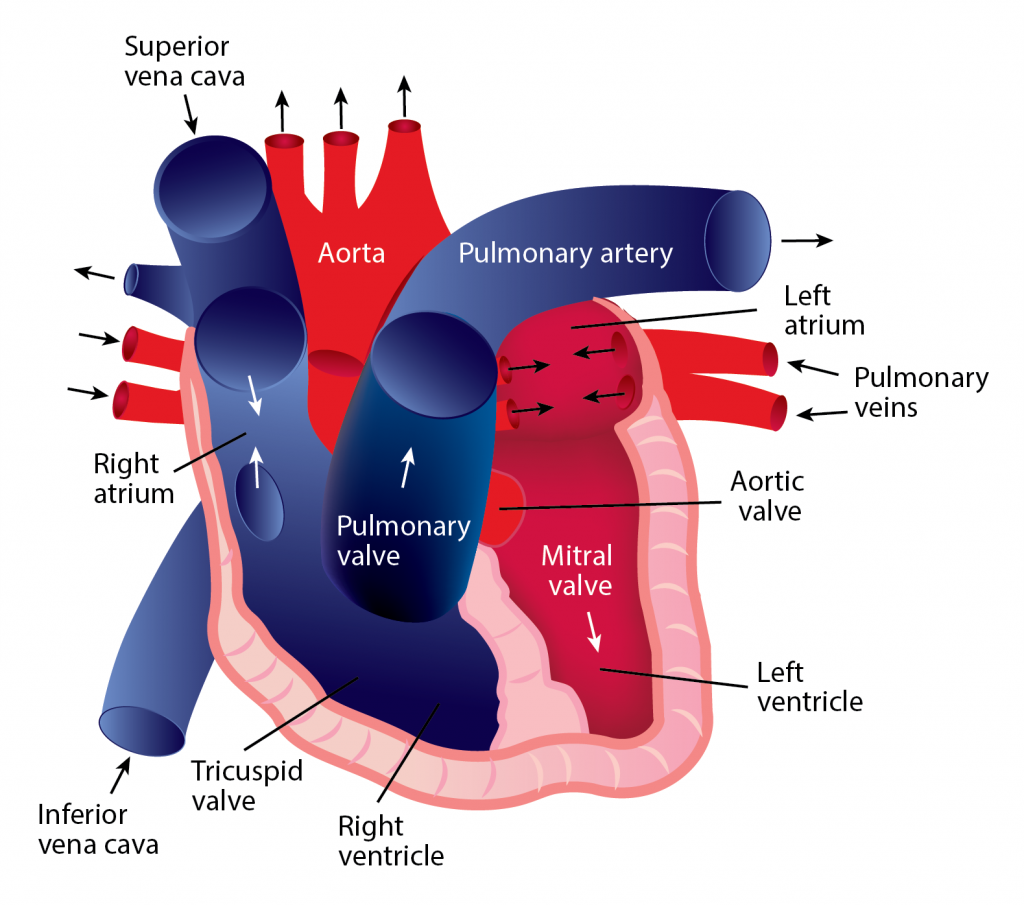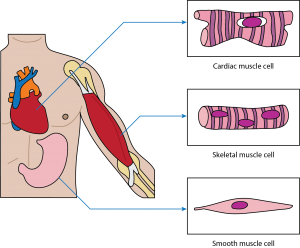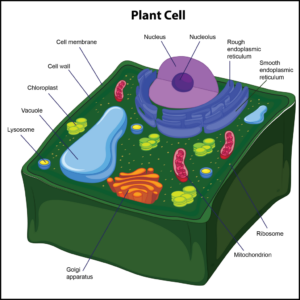As soon as an invader, known as a(n) _____, enters the body, the body begins to fight.
antibody
pathogen
trigger
vaccination
Correct Answer : B
Pathogen is an infectious foreign body that enters the body and causes disease or illness to the person. There are five types of pathogens: viruses, bacteria, fungi, protozoa, and worms. Pathogens have antigen proteins found on their surface and are unique to each pathogen.
Antibody is a protein produced by the body’s immune system when it detects harmful substances (antigens). There are many different antibodies found in the body. Each one is unique and protects the body against the specific antigen that it detects at any given time. If there are no antibodies for a specific antigen, the more likely you are to develop an illness.
Vaccinations are the introduction of a dead or disabled pathogen or of a harmless microbe with the protein of a pathogen on its surface into the body. Often administered through needle injection, to stimulate the immune system to produce immunity to a specific disease Immunity protects the body from a disease when exposed to it.
There are four types of immunity: natural/passive, natural/active, artificial/passive, and artificial/ active.
- Natural/passive – Babies receive immunities from breastmilk.
- Natural/active – The body produces antibodies to combat an illness when a person becomes sick.
- Artificial/passive – This immunity is temporary and requires doses of serum to maintain the immunity.
- Artificial/active – A vaccination provides artificial/active immunity.
TEAS 7 Exam Quiz Bank
HESI A2 Exam Quiz Bank
Find More Questions 📚
Teas 7 Questions: We got the latest updated TEAS 7 questions
100% Money Refund: 100% money back guarantee if you take our full
assessment pass with 80% and fail the actual exam.
Live Tutoring: Fully customized live tutoring lessons.
Guaranteed A Grade: All students who use our services pass with 90%
guarantee.
Related Questions
Correct Answer is D
Explanation
Because it has more protons than electrons, this atom has a positive charge and can be classified as a cation. When a metal such as sodium reacts to become stable, it loses its valence electrons. At first, it is a neutral atom with 11 protons and 11 electrons. When it loses an electron, the number of protons does not change, and the atom has 11 protons and 10 electrons. Because there is one more positively charged proton, acationforms. A cation is an ion with a net positive charge.
Correct Answer is C
Explanation
The particles in a sample of gas are farther apart than in solids or liquids and therefore have the lowest amount of cohesion.
- Cohesion is the tendency of particles of the same kind to stick to each other.
- A solid has the lowest amount of energy because its particles are packed close together. Liquids have more energy than a solid, and gases have more energy than solids or liquids because the cohesive forces are very weak.
Correct Answer is B
Explanation
Blood continually flows in one direction, beginning in the heart and proceeding to the arteries, arterioles, and capillaries. When blood reaches the capillaries, exchanges occur between blood and tissues. After this exchange happens, blood is collected into venules, which feed into veins and eventually flow back to the heart’s atrium. The heart must relax between two heartbeats for blood circulation to begin.
Two types of circulatory processes occur in the body:
Systemic circulation
- The pulmonary vein pushes oxygenated blood into the left atrium.
- As the atrium relaxes, oxygenated blood drains into the left ventricle through the mitral valve. 3. The left ventricle pumps oxygenated blood to the aorta.
- Blood travels through the arteries and arterioles before reaching the capillaries that surround the tissues.
Pulmonary circulation
- Two major veins, the Superior Vena Cava and the Inferior Vena Cava, brings deoxygenated blood from the upper and lower half of the body.
- Deoxygenated blood is pooled into the right atrium and then sent into the right ventricle through the tricuspid valve, which prevents blood from flowing backward.
- The right ventricle contracts, causing the blood to be pushed through the pulmonary valve into the pulmonary artery.
- Deoxygenated blood becomes oxygenated in the lungs.
- Oxygenated blood returns from the lungs to the left atrium through the pulmonary veins.

Correct Answer is C
Explanation
Theaging processaffects hormone activity in one of three ways: their secretion can decrease, remain unchanged, or increase.
Hormones thatdecrease secretioninclude the following:
- Estrogen (in women)
- Testosterone (in men)
- Growth hormone
- Melatonin
Inwomen, the decline in estrogen levels leads to menopause. Inmen, testosterone levels usually decrease gradually. Decreased levels of growth hormone may lead to decreased muscle mass and strength. Decreased melatonin levels may play an important role in the loss of normal sleep-wake cycles (circadian rhythms) with aging.
Hormones that usually remainunchangedorslightly decreaseinclude the following:
- Cortisol
- Insulin
- Thyroid hormones
Hormones that mayincrease secretionslevels include the following:
Parathyroid hormone
- Follicle-stimulating hormone (FSH)
- Luteinizing hormone (LH)
- Norepinephrine
- Epinephrine, in the very old
Correct Answer is B
Explanation
Pathogenis an infectious foreign body that enters the body and causes disease or illness to the person. There are five types of pathogens: viruses, bacteria, fungi, protozoa, and worms. Pathogens have antigen proteins found on their surface and are unique to each pathogen.
Antibodyis a protein produced by the body’s immune system when it detects harmful substances (antigens). There are many different antibodies found in the body. Each one is unique and protects the body against the specific antigen that it detects at any given time. If there are no antibodies for a specific antigen, the more likely you are to develop an illness.
Vaccinationsare the introduction of a dead or disabled pathogen or of a harmless microbe with the protein of a pathogen on its surface into the body. Often administered through needle injection, to stimulate the immune system to produce immunity to a specific disease Immunity protects the body from a disease when exposed to it.
There are four types of immunity: natural/passive, natural/active, artificial/passive, and artificial/ active.
- Natural/passive – Babies receive immunities from breastmilk.
- Natural/active – The body produces antibodies to combat an illness when a person becomes sick.
- Artificial/passive – This immunity is temporary and requires doses of serum to maintain the immunity.
- Artificial/active – A vaccination provides artificial/active immunity.
Correct Answer is C
Explanation
Homeostasisis the existence and maintenance of a relatively constant environment within the body. Each cell of the body is surrounded by a small amount of fluid, and the normal functions of each cell depend on the maintenance of its fluid environment within a narrow range of conditions, including temperature, volume, and chemical content. These conditions are known asvariables. For example, body temperature is a variable that can increase in a hot environment or decrease in a cold environment.
There are two types of feedback mechanisms in the human body: negative and positive.
- Negative Feedback: Most systems of the body are regulated by negative feedback mechanisms, which maintain homeostasis. Negative means that any deviation from the set point is made smaller or is resisted. The maintenance of normal blood pressure is a negative-feedback mechanism. Normal blood pressure is important because it is responsible for moving blood from the heart to tissues.
- Positive Feedback: Positive-feedback mechanisms are not homeostatic and are rare in healthy individuals. Positive means that when a deviation from a normal value occurs, the response of the system is to make the deviation even greater. Positive feedback therefore usually creates a cycle leading away from homeostasis and, in some cases, results in death. Inadequate delivery of blood to cardiac muscle is an example of positive feedback.
Correct Answer is B
Explanation
Skeletal muscle: This muscle cell is striated, long, and cylindrical. There are many nuclei in a skeletal muscle cell. Attached to bones in the body, skeletal muscle contracts voluntarily, meaning that it is under conscious control.
Smooth muscle: This muscle consists of nonstriated muscle cells that are spindle-shaped. Like cardiac muscle cells, smooth muscle cells contain one nucleus. This muscle type is found in the walls of internal organs like the bladder and stomach. Smooth muscle contraction is involuntary and controlled by the autonomic nervous system.
Cardiac muscle: This muscle consists of muscle cells that are striated, short, and branched. These cells contain one nucleus, are branched, and are rectangular. Cardiac muscle contraction is an involuntary process, which is why it is under the control of the autonomic nervous system. This muscle is found in the walls of the heart.

Correct Answer is D
Explanation
In this reaction, two elements are trading places hence double-replacement. In the reactants, zinc and bromide ions are together, and potassium and hydroxide ions are together. In the products, zinc and hydroxide ions are together, and potassium and bromide ions are together.
Correct Answer is D
Explanation
Human intercourse consists of the male introducing sperm into the female’s reproductive system. Sperm may then pass through the female’s reproductive system to the Fallopian tubes where one sperm fertilizes an ovum, creating azygote. The zygote passes out of the Fallopian tube and implants into the uterine wall to begin gestation. Over nine months, the zygote develops and grows into an embryo and then a fetus. An infant is the baby that is born.
Correct Answer is A
Explanation
Only plant cells have cell walls, which help protect the cell and provide structural support. The cell wall also enforces the overall structural integrity of the plant cell, and it is found outside the cell membrane. The next organelle is a chloroplast. It is found in the cytoplasm of only plant cells.Chloroplastsare photosynthetic compounds usedto make food for plant cells by harnessing energy from the sun. These organelles play a role in photosynthesis.

This question was extracted from the actual TEAS Exam. Ace your TEAS exam with the actual TEAS 7 questions, Start your journey with us today
Visit Naxlex, the Most Trusted TEAS TEST Platform With Guaranteed Pass of 90%.
Money back guarantee if you use our service and fail the actual exam. Option of personalised live tutor on your area of weakness.
